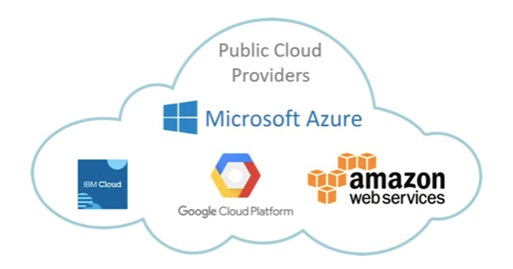Home »
Cloud Computing
What is Public Cloud in Cloud Computing?
In this article, we are going to learn about public cloud in cloud computing?
Submitted by Aleesha Ali, on March 24, 2018
Historically, public clouds were the first class of cloud that were implemented and offered. They offer solutions for minimizing IT infrastructure costs and serve as a viable option for handling peak loads on the local infrastructure. They have become an interesting option for small enterprises, which are able to start their businesses without large up-front investments by completely relying on public infrastructure for their IT needs.

Image source: http://www.definethecloud.net/tag/public-cloud/
What made attractive public clouds compared to the reshaping of the private premises and the purchase of hardware and software was the ability to grow or shrink according to the needs of the related business. By renting the infrastructure or subscribing to application services, customers were able to dynamically upsize or downsize their IT according to the demands of their business. Currently, public clouds are used both to completely replace the IT infrastructure of enterprises and to extend it when it is required.
Public clouds constitute the first expression of cloud computing. They are a realization of the canonical view of cloud computing in which the services offered are made available to anyone, from anywhere, and at any time through the Internet. From a structural point of view, they are the distributed system, most likely composed of one or more data centre is connected together, on top of which the specific services offered by the cloud are implemented.
Any customer can easily sign in with the cloud provider, enter her credential and billing details, and use the services offered.
A fundamental characteristic of public clouds is multitenancy. A public cloud is meant to serve a multitude of users, not a single customer. Any customer requires a virtual computing environment that is separated, and most likely isolated, from other users. This is a fundamental requirement to provide effective monitoring of user activities and guarantee the desired performance and the other QoS attributes negotiated with users. QoS management is a very important aspect of public clouds. Hence, a significant portion of the software infrastructure is devoted to monitoring the cloud resources, to bill them according to the contract made with the user, and to keep a complete history of cloud usage for each customer. These features are fundamental to public clouds because they help providers offer services to users with full accountability.
Some major cloud provider companies are:

Image source: https://cloudnewsinc.com/hybrid-cloud-hosting-explained/
A public cloud can offer any kind of service: infrastructure, platform, or applications. For example, Amazon EC2 is a public cloud that provides infrastructure as a service; Google AppEngine is a public cloud that provides an application development platform as a service; and SalesForce.com is a public cloud that provides software as a service. What makes public clouds peculiar is the way they are consumed: They are available to everyone and are generally architected to support a large quantity of users. What characterizes them is their natural ability to scale on demand and sustain peak loads.
Reference: Public cloud
Advertisement
Advertisement